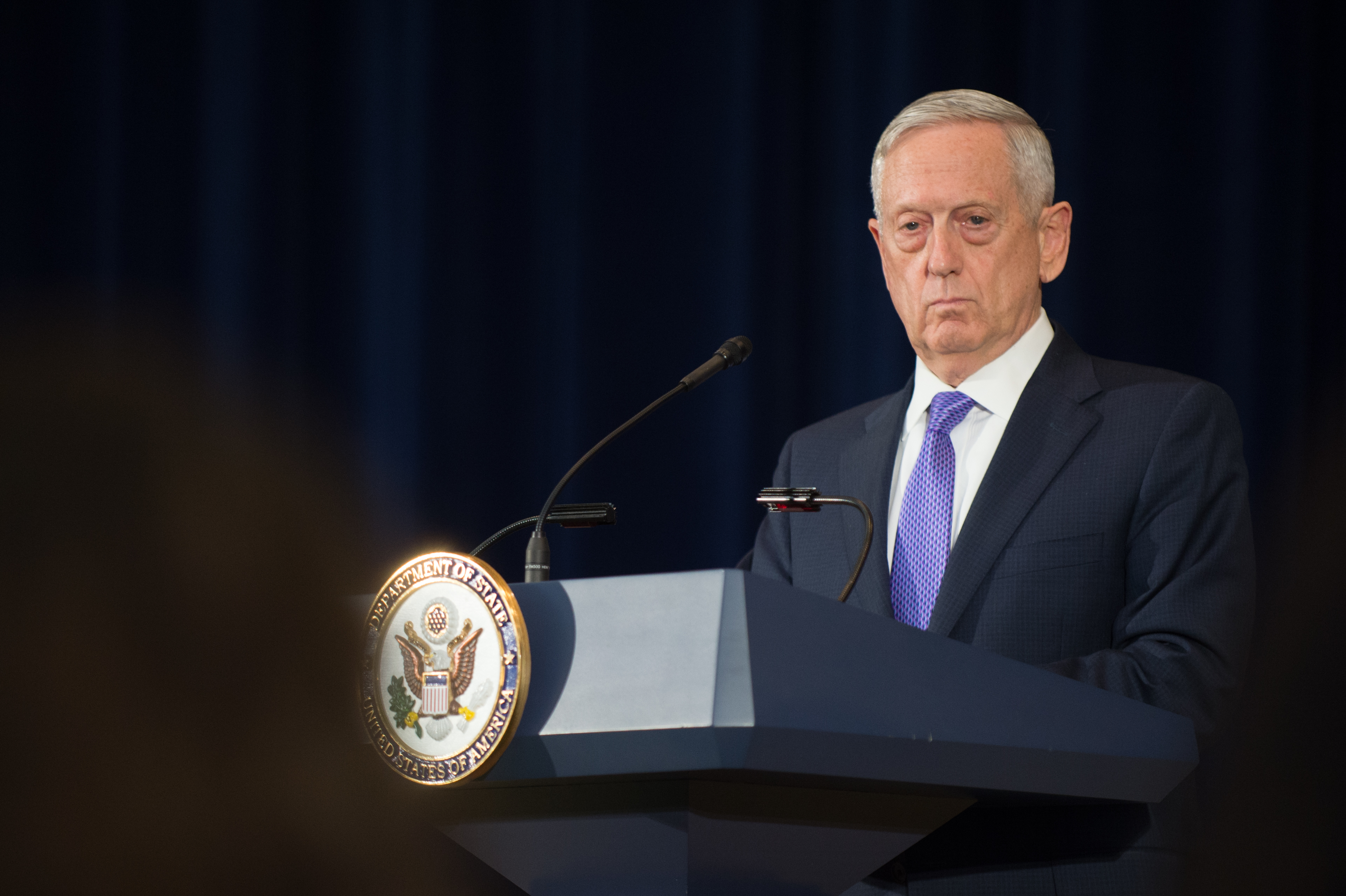
Defense Secretary Jim Mattis speaks to members of the press following US–China diplomatic and security dialogue, June 21, 2017. DOD photo by USA Sgt. Amber I. Smith.
One of the leading Republicans on the Senate Armed Services Committee said China’s efforts to militarize the South China Sea could have grave consequences.
“It’s almost as if they are preparing for World War III,” said Sen. Jim Inhofe (R-Okla.), chairing the committee during Army Lt. Gen. Stephen Lyons’ confirmation hearing to be the next commander of US Transportation Command. “It’s having an effect on our allies over there because as we visit them, they aren’t sure which side they are going to be on because China is clearly making much more aggressive moves in that part of the world, and I can’t help but think it goes beyond just impairing our sea lanes and creating problems for us.”
Lyons agreed with the assessment, citing increased competition with China, which he noted falls “below the threshold of open armed conflict.”
The comments come the same day Secretary of Defense Jim Mattis arrived in China for his first visit to the country as the United States’ top defense official. Mattis on Monday declined to say what his message to the Chinese will be, saying he wants to have an “open discussion with my counterpart” about the military-to-military relationship and how the two countries see that relationship developing.
“I want to go in, right now, without basically poisoning the well at this point, as if my mind’s already made up,” said Mattis. “I’m going there to have a conversation.”
However, earlier this month at the 2018 Shangri-La Dialogue, Mattis took a hard line on China, saying its policy in the South China Sea stands in “stark contrast to the openness of our strategy.” At the time, he cited China’s “deployment of anti-ship missiles, surface-to-air missiles, electronic jammers, and more recently, the landing of bomber aircraft at Woody Island,” saying such actions are “tied directly to military use for the purpose of intimidation and coercion.”
For more on China’s build up in the South China Sea, see our Infographic, Making an Island, from the July issue of Air Force Magazine.